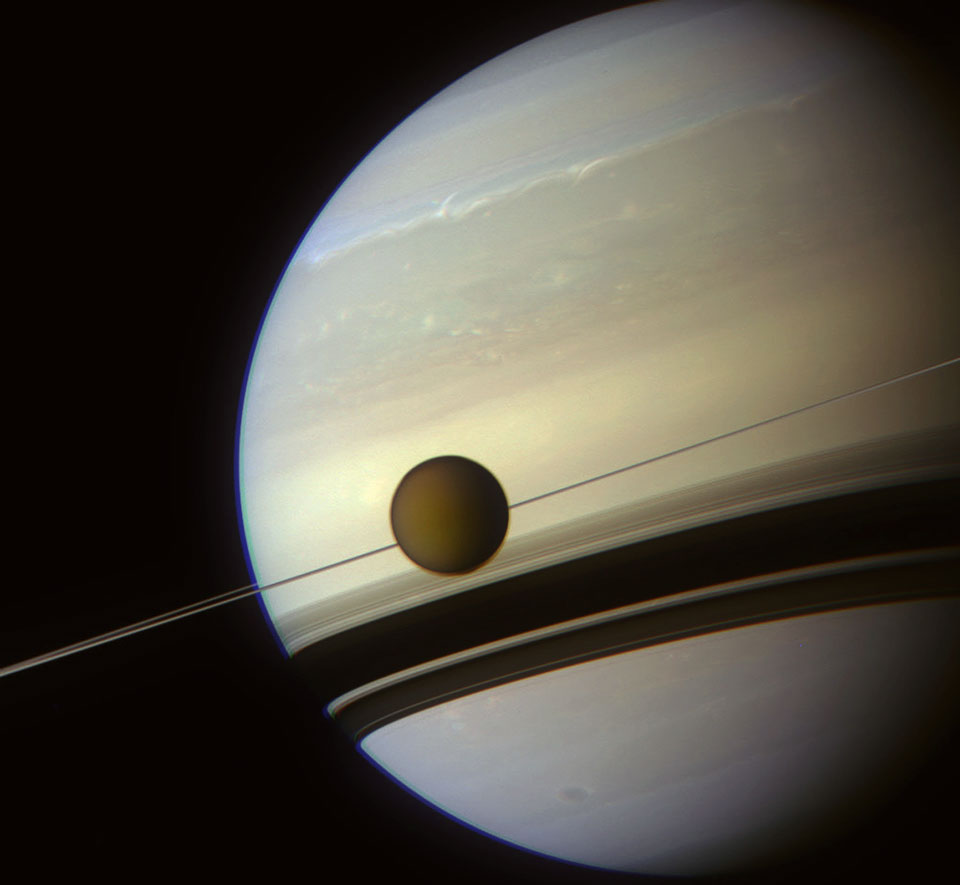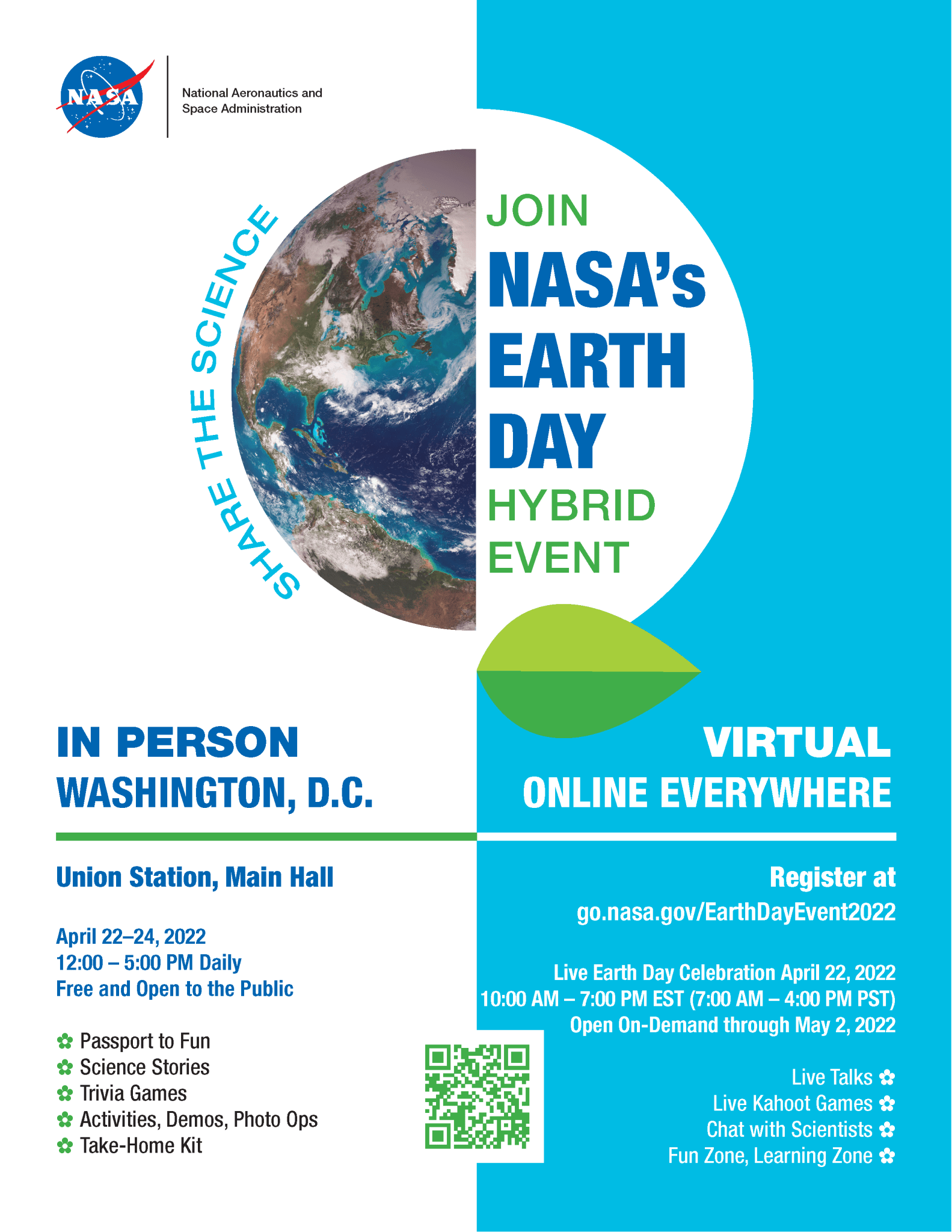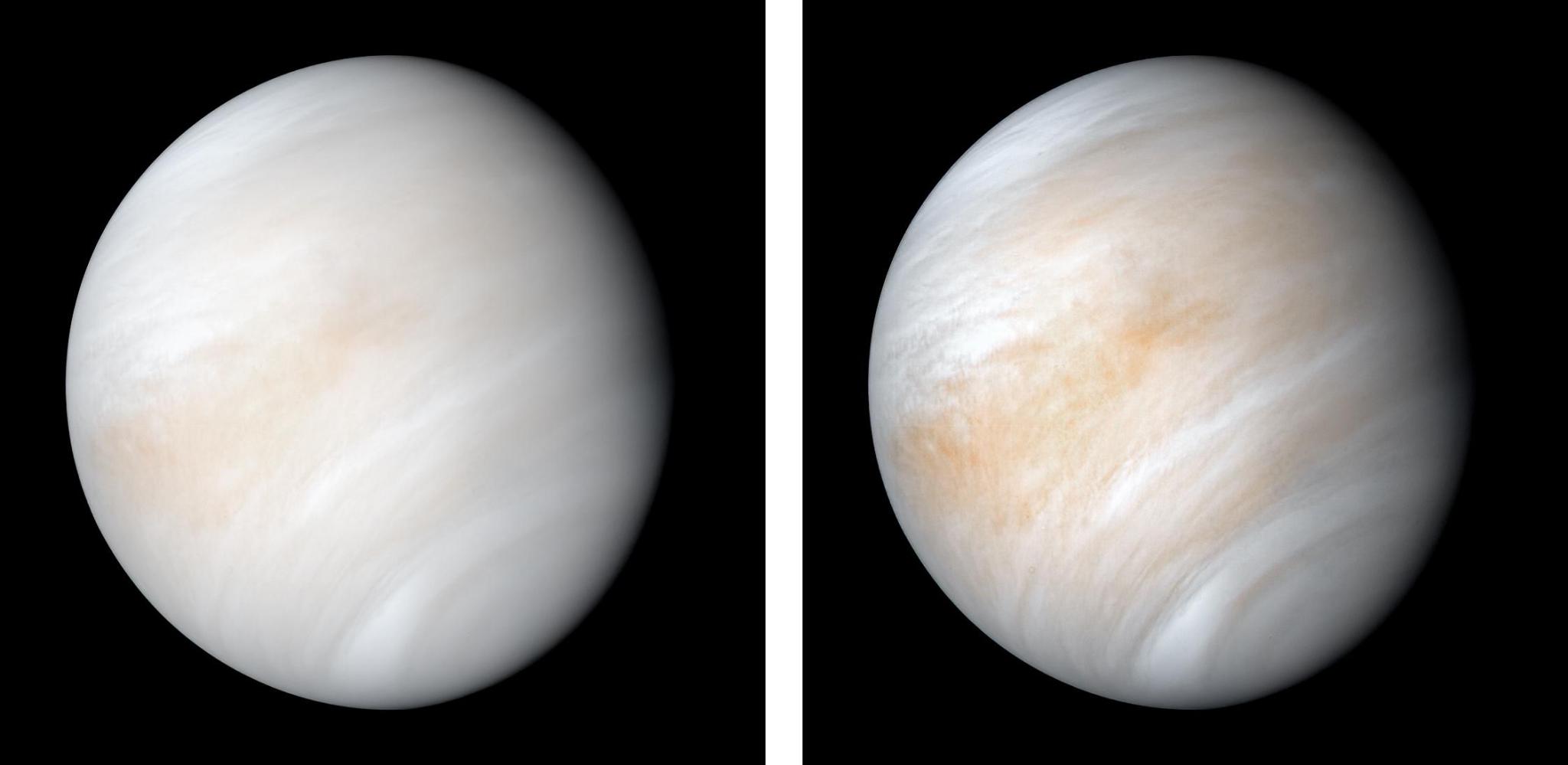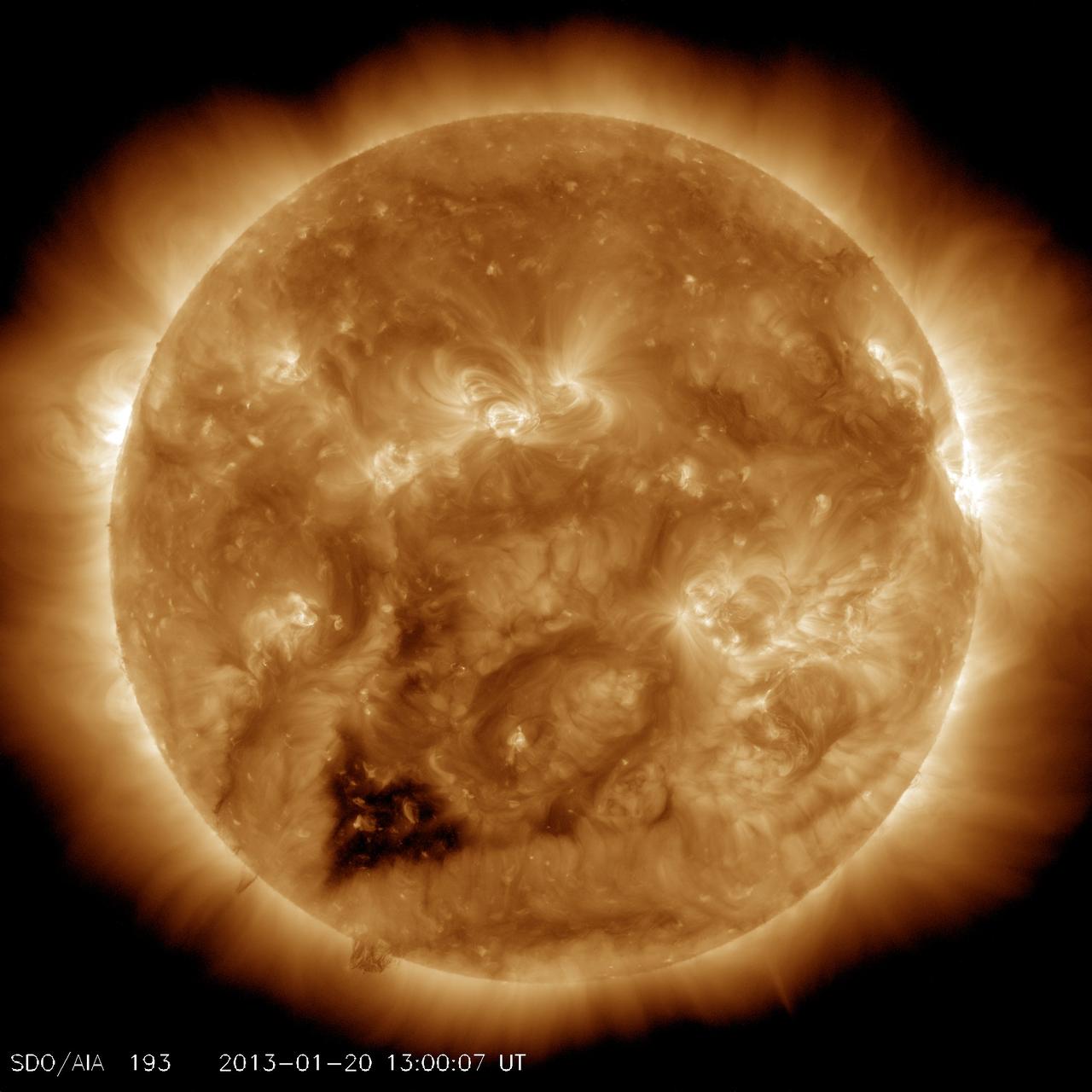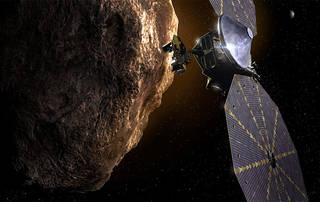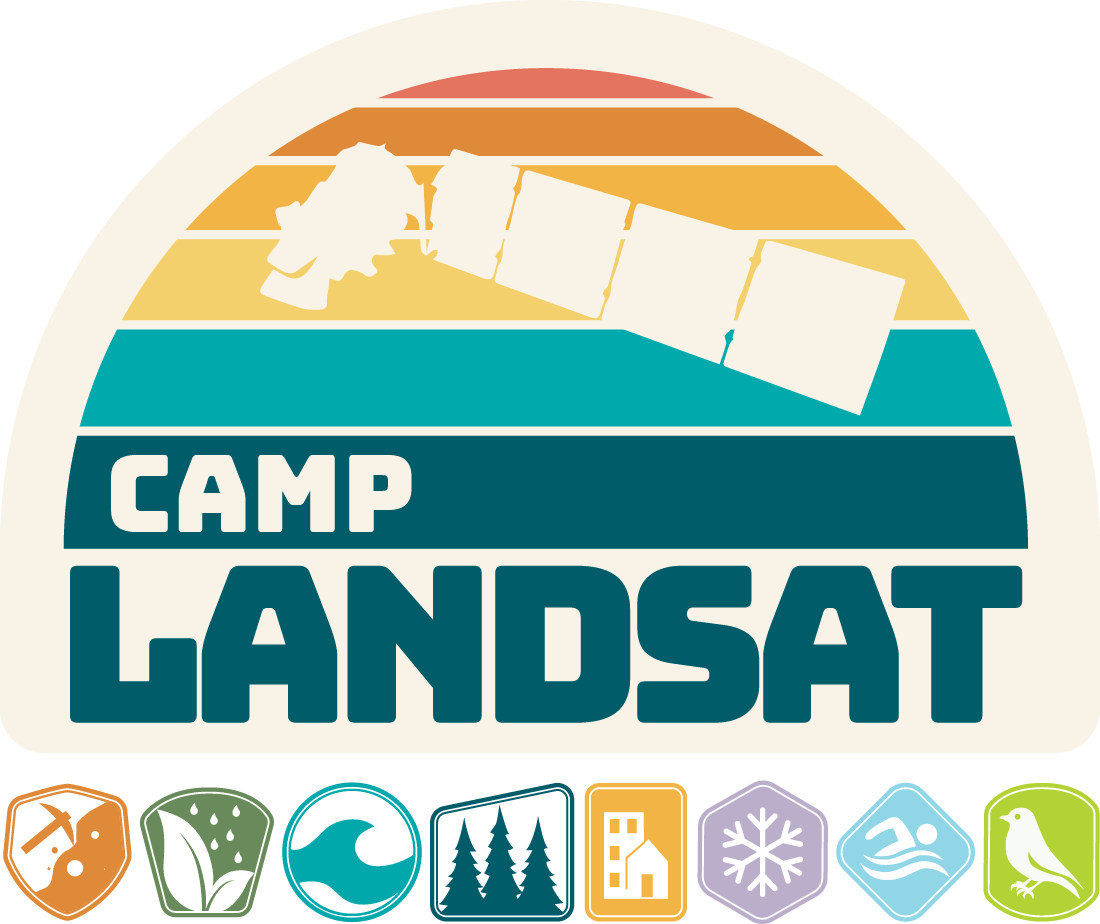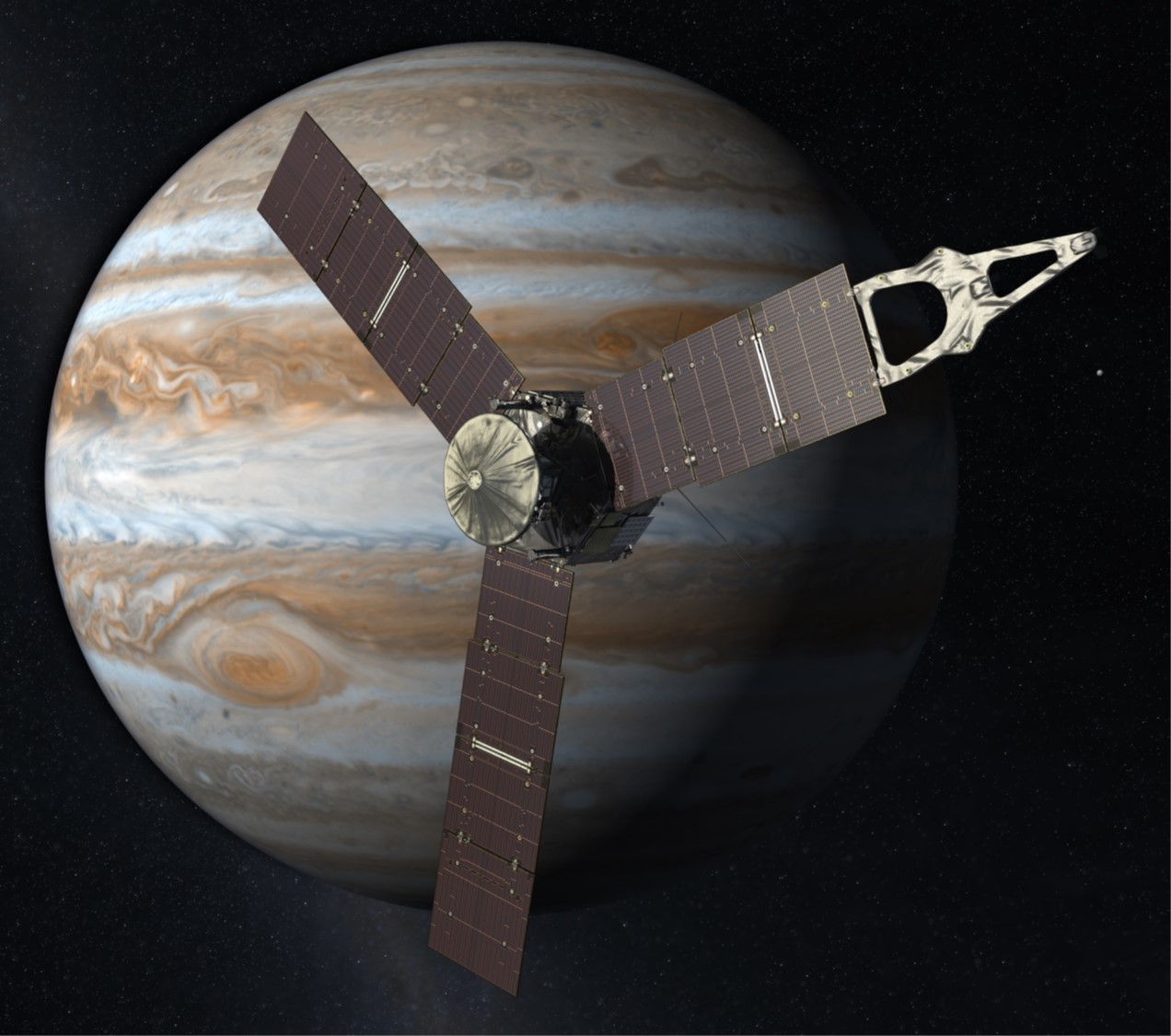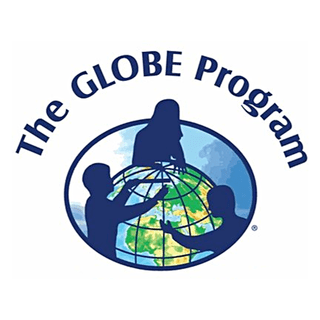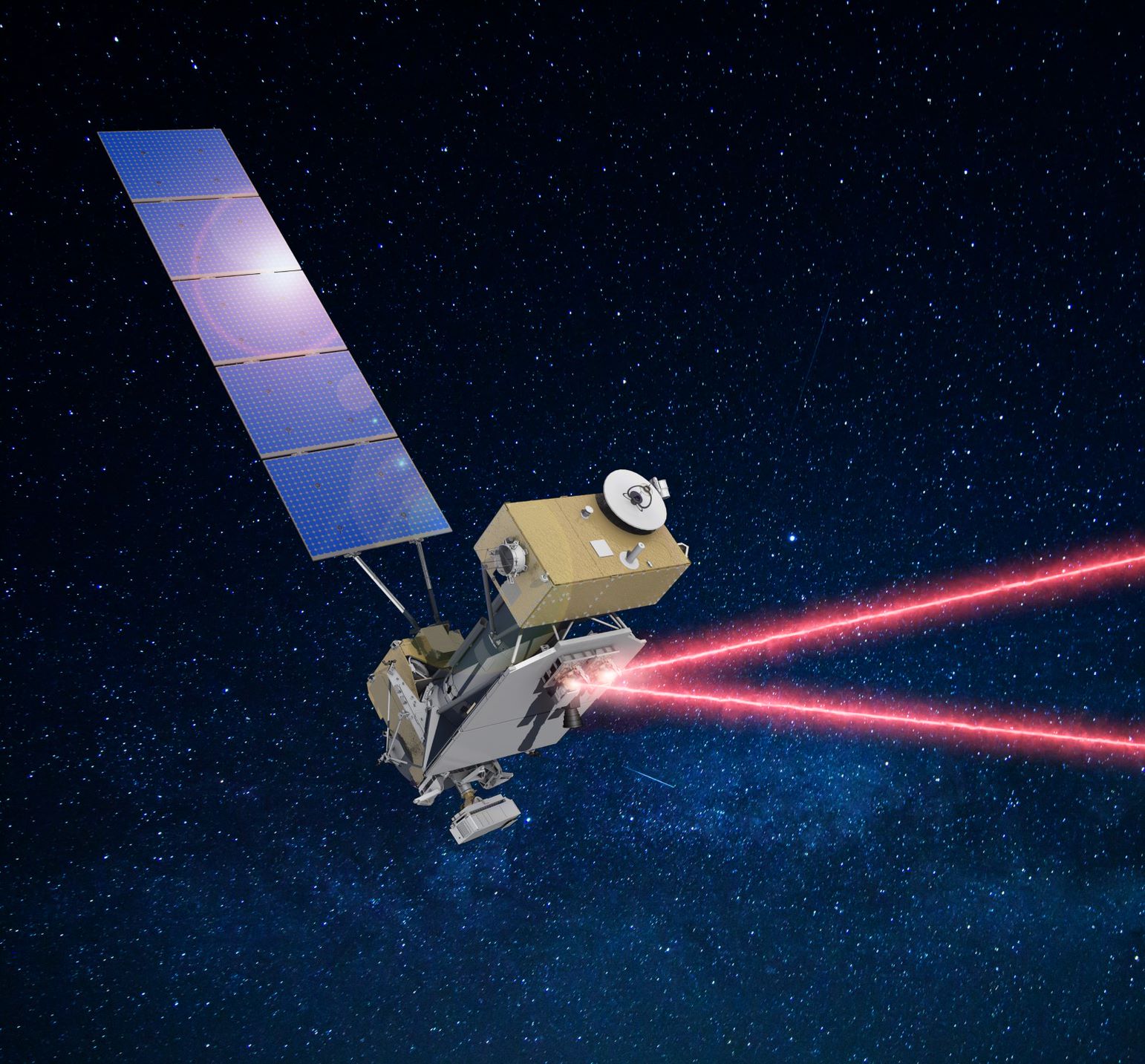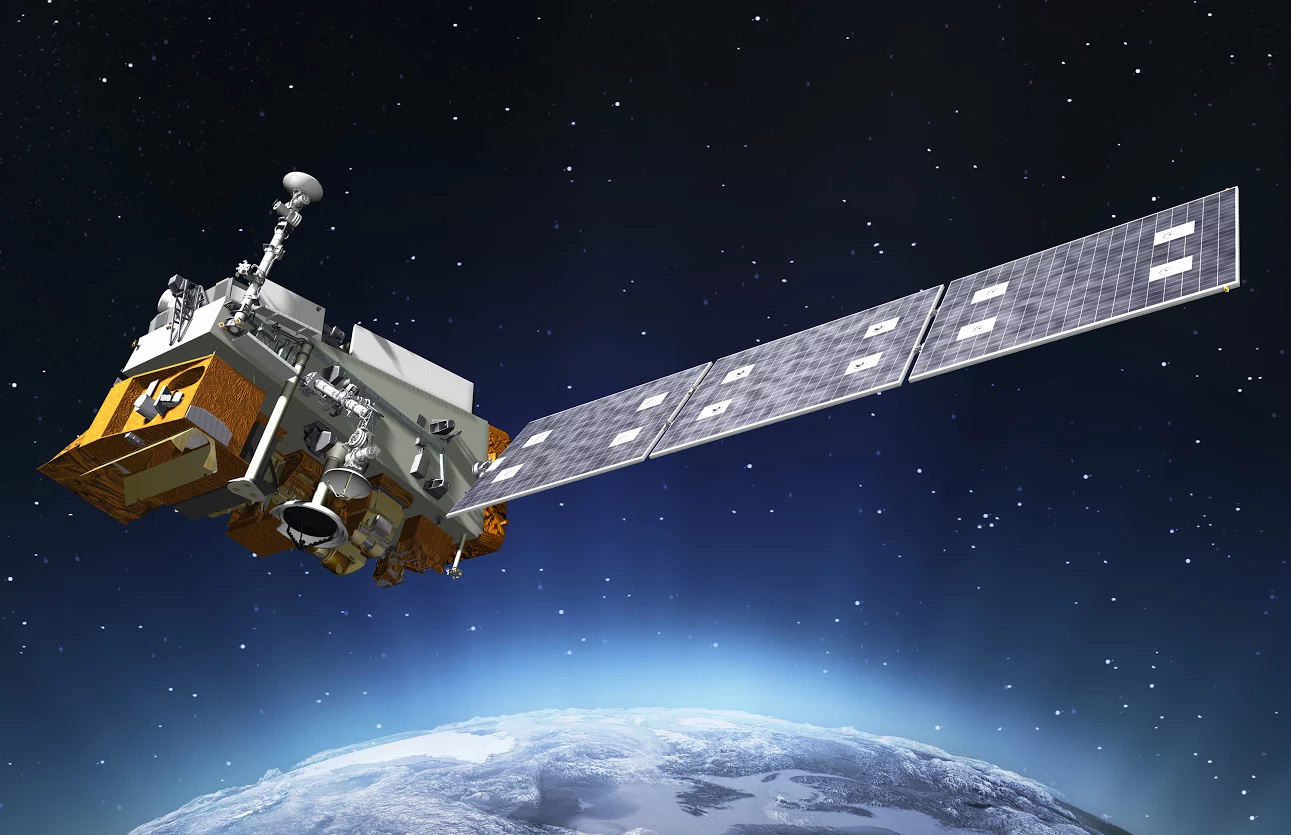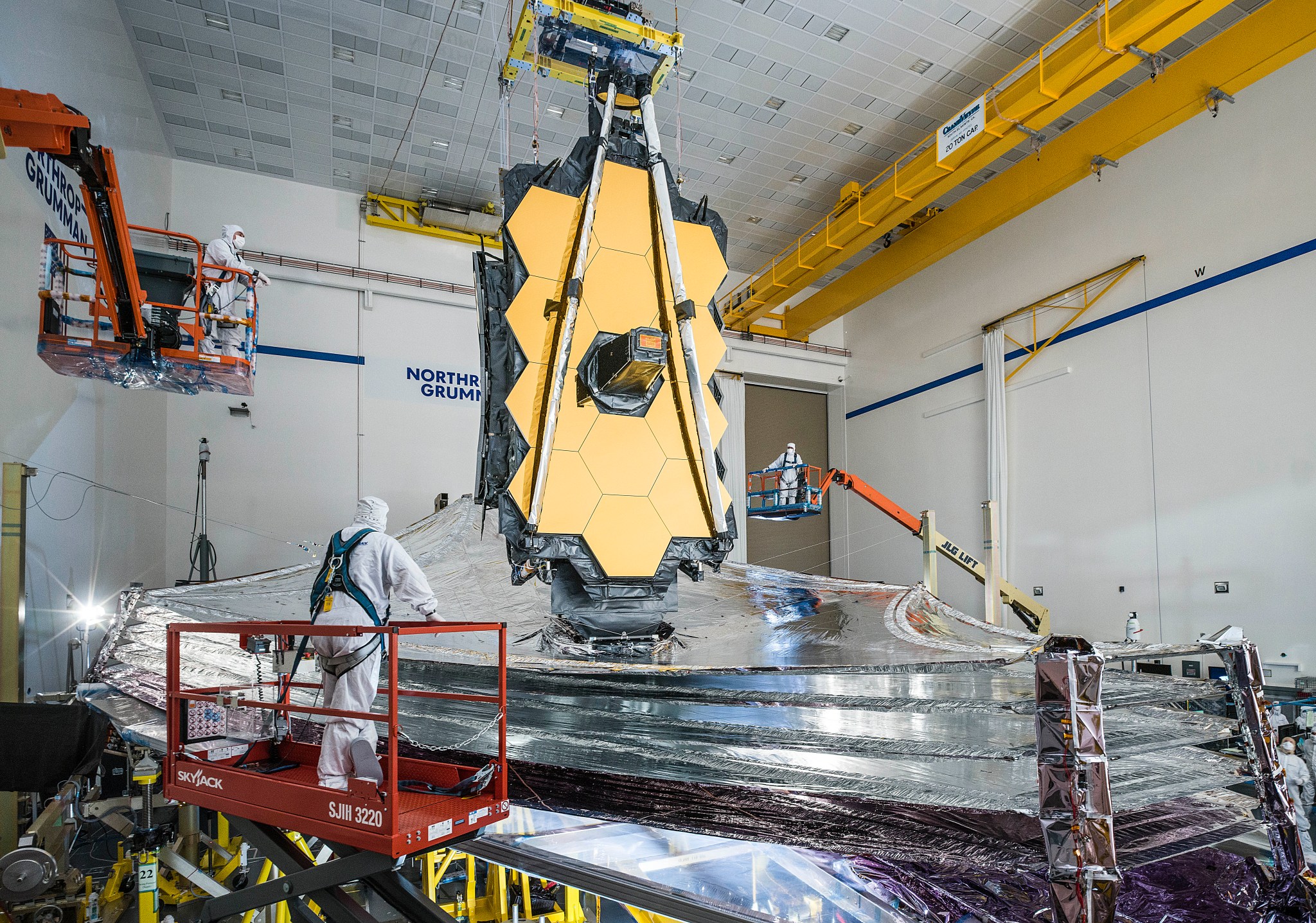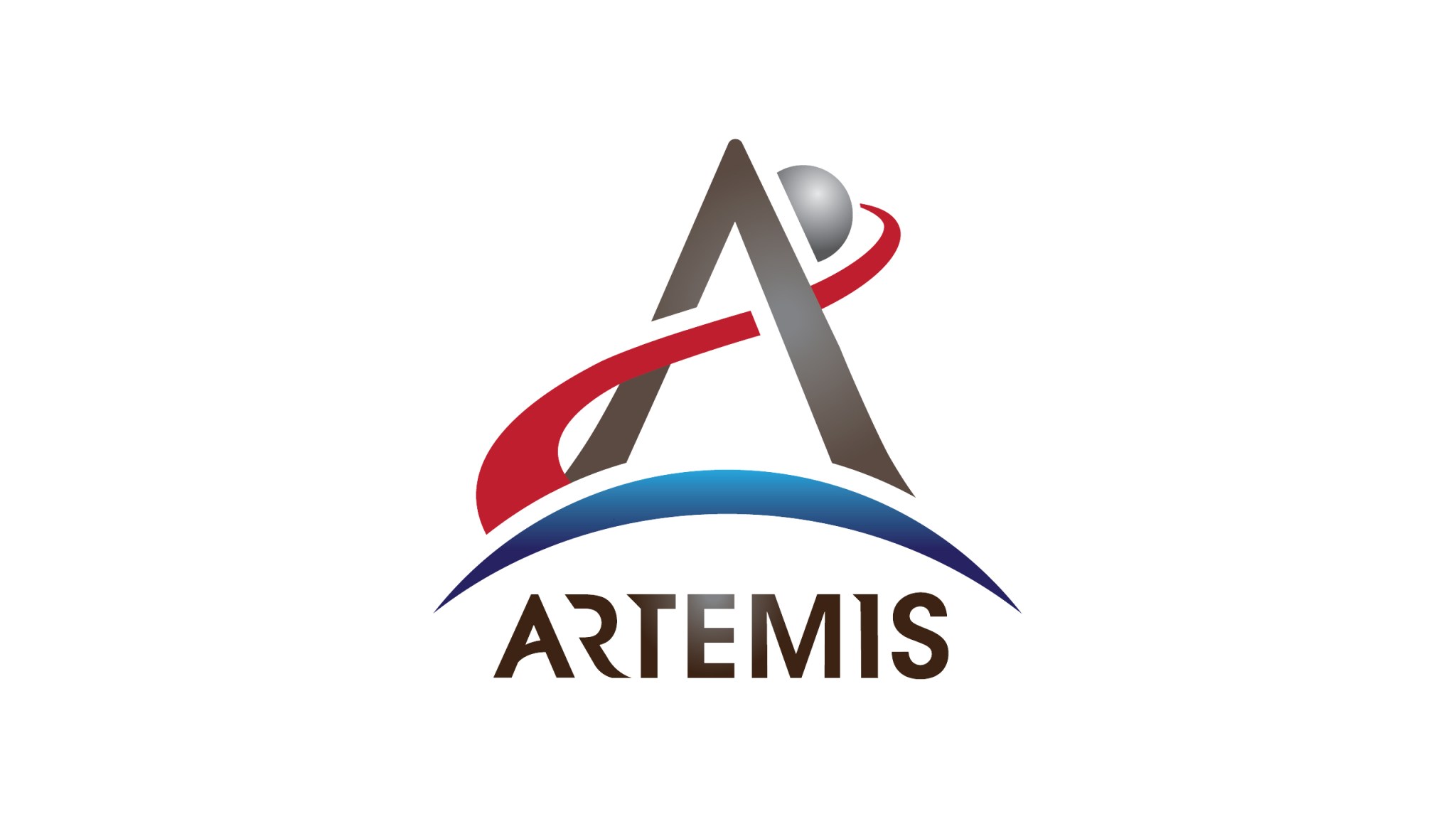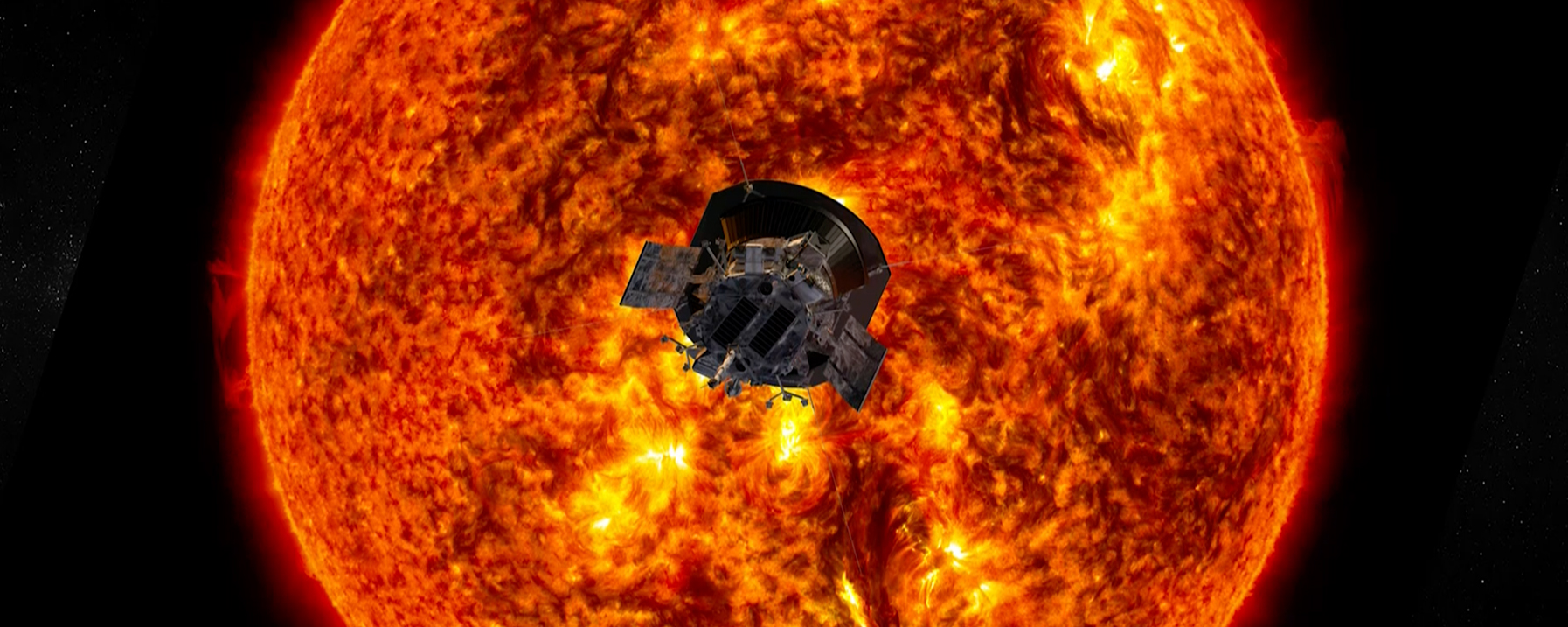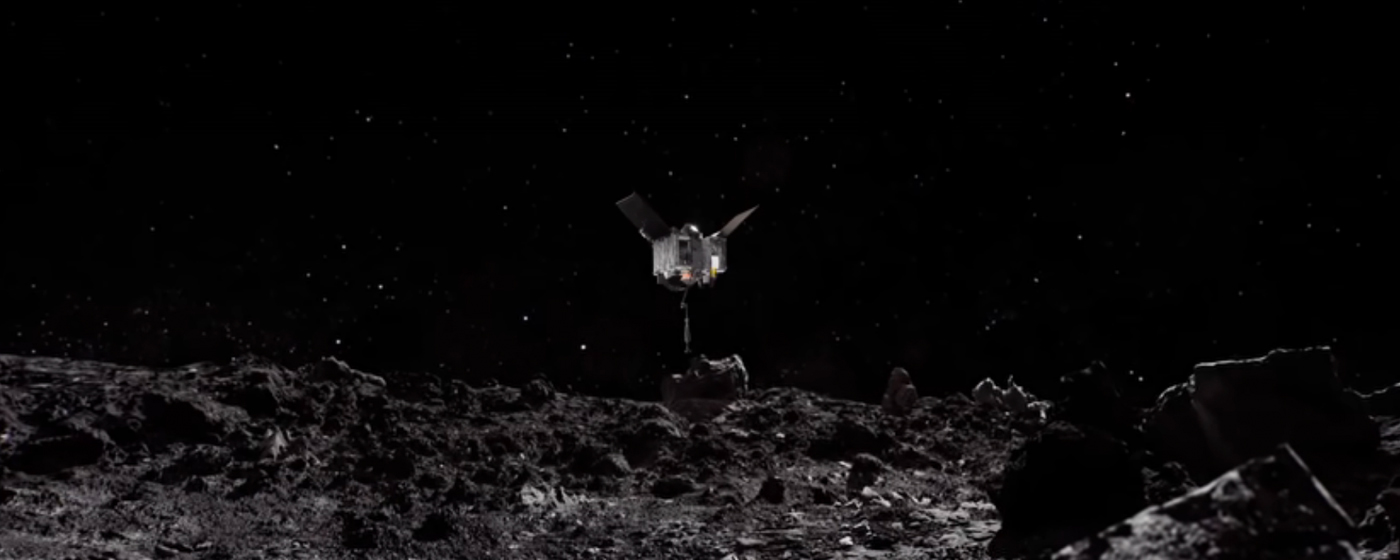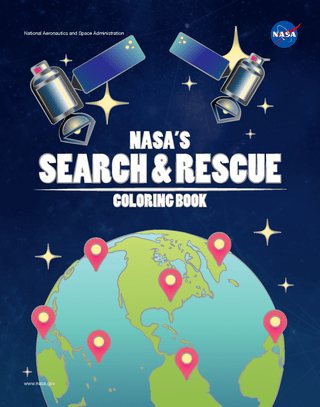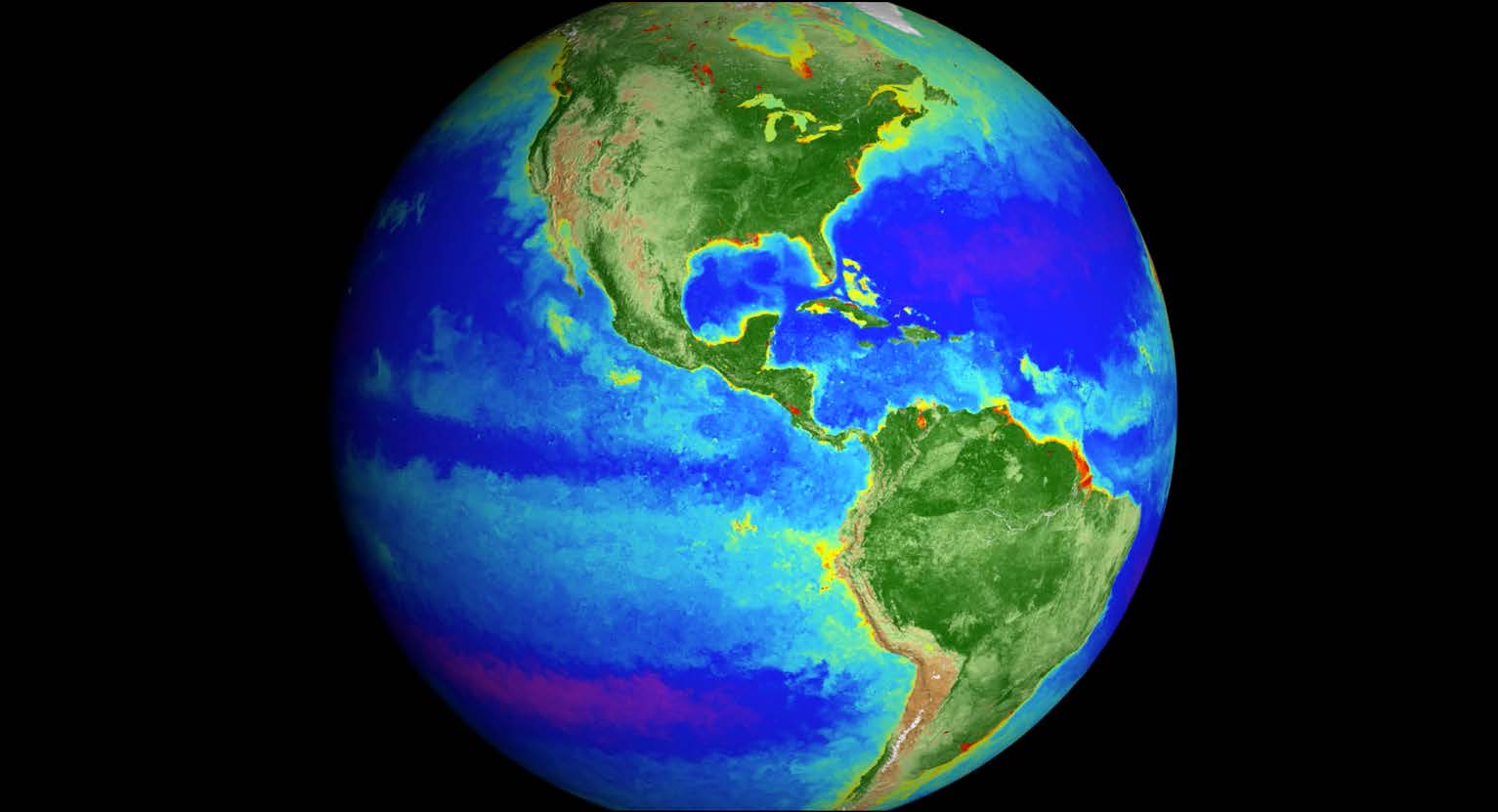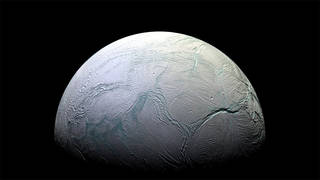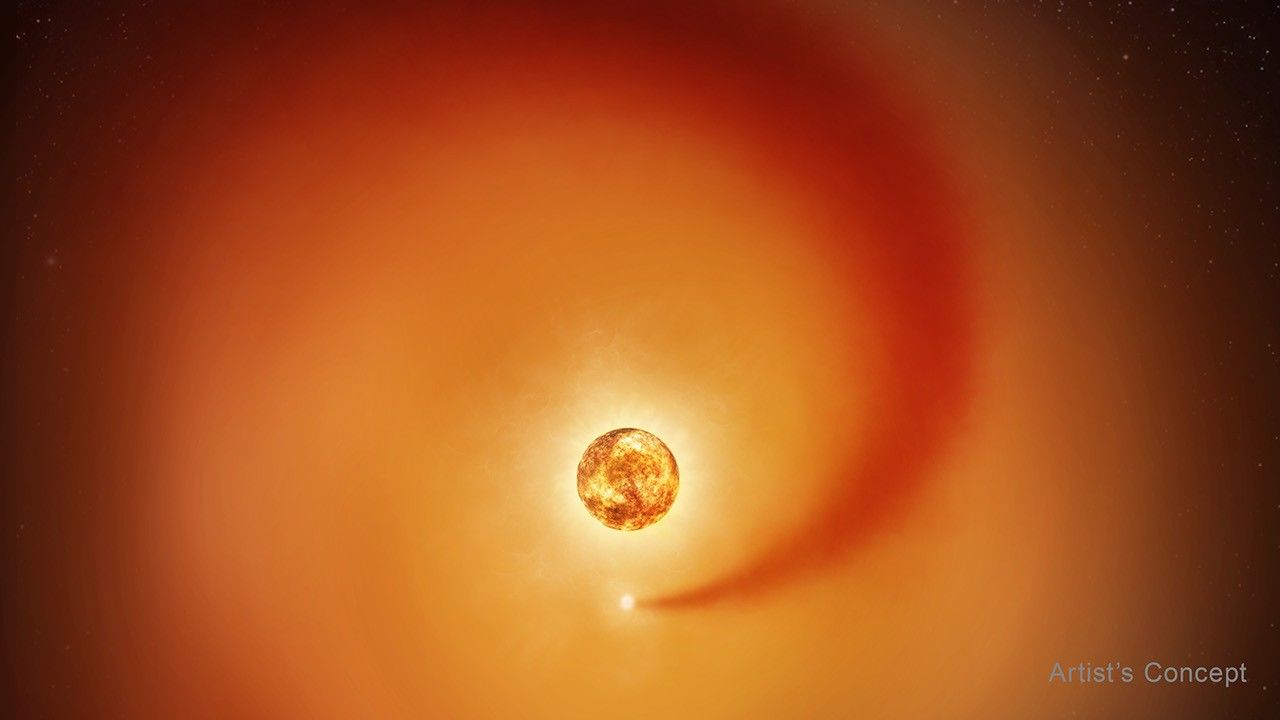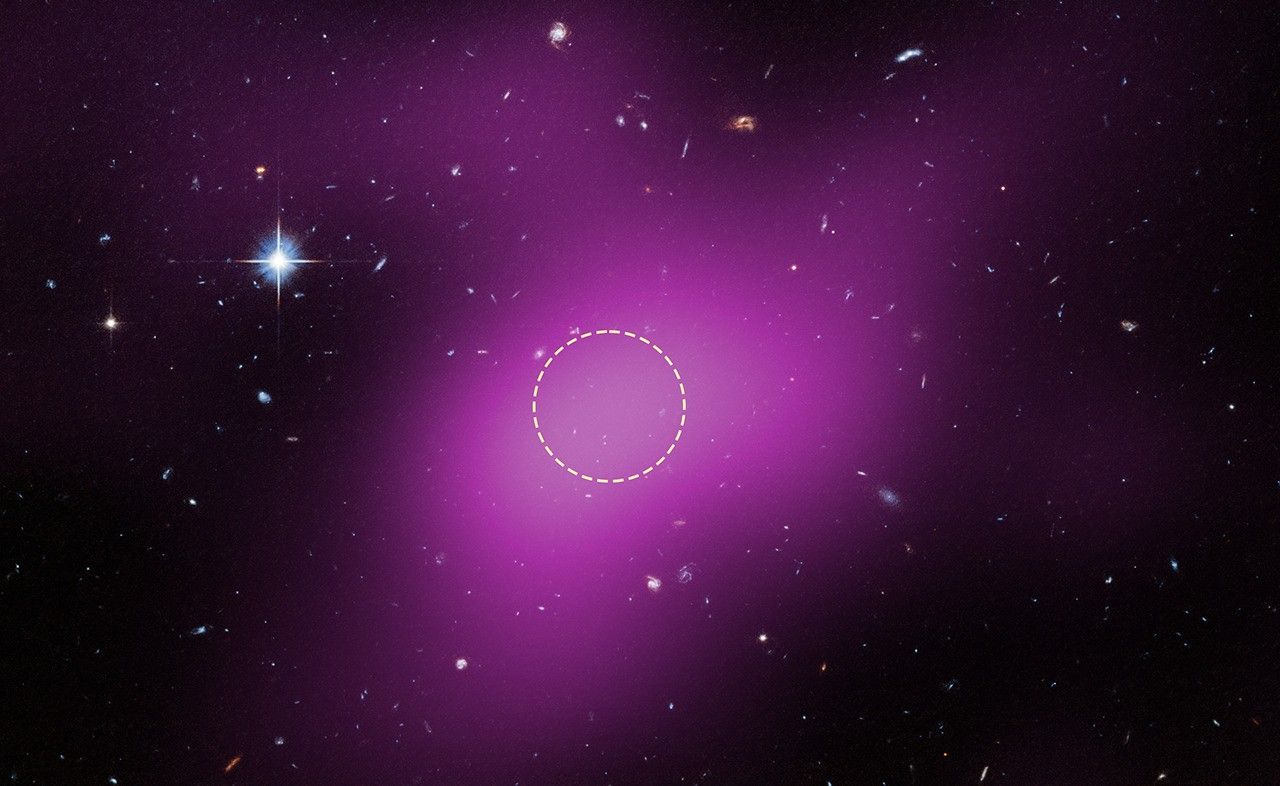Sunday Experiment Series
Get your Sunday Experiment fix from home! We’ll be highlighting a different mission here each month with fun demonstrations and activities that you can do anywhere. In addition to celebrating all things science, technology, engineering and mathematics, the Sunday Experiment celebrates major science missions that are managed by Goddard and set to launch in the near future.
May 2022 – Discover the Worlds of Saturn and Titan
Often considered the jewel of our solar system, Saturn has long fascinated stargazers and scientists. Saturn has been explored by a few different NASA missions over the decades, including by Pioneer 11 via a flyby in 1979, the twin Voyager spacecraft in the early 1980s and the Cassini spacecraft from 2004 to 2017. These missions provided us a wealth of new knowledge, from the discovery of unique moons and rings to strangely shaped storms at the planet’s north pole.
However, our exploration of the Saturn system is far from over. In June 2019, NASA selected the Dragonfly mission to explore Saturn’s largest moon, Titan, in depth. Taking advantage of Titan’s dense atmosphere and low gravity, Dragonfly – a rover-size dronelike vehicle – will explore dozens of locations across the icy world, sampling and measuring the composition of Titan’s surface materials to search for the building blocks of life. Dragonfly is scheduled to launch in June 2027 and arrive at Titan by 2034.
Try This at Home!
- Exploring the Universe: Ice Orbs Learn how NASA planetary scientists are probing ocean worlds in the outer solar system, searching for evidence of liquid water and possible signs of life beneath the icy surface. Put what you learn into practice by investigating a frozen sphere using various tools to learn about objects hidden inside. This activity can be adapted to include other tools and probes, whatever you may already have on hand. *Note: This activity is also available in Spanish.
- Make a CD Saturn Make a model of Saturn and its rings using some common craft materials.
- Make a Planet Mask Learn about Saturn and make your very own wearable planet mask.
Additional Resources
- NASA Saturn and Titan Resources Explore this all-in-one resource package that combines activities you can do at home with videos, animations, stories and articles.
- NASA’s Solar System Treks NASA’s Titan Solar System Trek is an online, browser-based portal that allows visitors to visualize, explore and analyze the surface of Titan using real data returned from spacecraft.
April 2022 – Earth Day and Earth Sciences Division
The Earth Sciences Division at NASA’s Goddard Space Flight Center plans, organizes, evaluates and implements a broad program of research on our planet’s natural systems and processes. Major focus areas include climate change, severe weather, the atmosphere, oceans, sea ice and glaciers, and the land surface.
To study the planet from the unique perspective of space, the division develops and operates remote-sensing satellites and instruments. It analyzes observational data from these spacecraft and makes them available to the world’s scientists. Education and public outreach efforts raise awareness of the division’s research and its benefits to society.
Earth Day Events (Virtual and In Person)
Earth Day events took place virtually on April 22, and in person from April 22 to 24, 2022.
Additional Earth Day Resources and Activities
- Build a Rain Gauge at Home with household items.
- Learn About Greenhouse Gases and make molecules.
- Elementary GLOBE’s modules introduce students in grades K-4 to the various aspects of Earth system science. Each module includes a science-based, fictional storybook in which kids explore an aspect of Earth’s system using their scientific skills as well as learning activities that further explore the content and help students develop sound science and engineering approaches to complex problems.
- Listen to the Clouds Science Playlist of five videos with experts explaining the science of clouds and the connections to citizen science.
- The short video “For Good Measure” explains why scientists turn to satellites to get a worldwide view of rainfall.
- Learn a little about the Global Precipitation Measurement mission in the Water Cycle Webquest and Earth’s water cycle.
- Sea Ice Towers – This elementary-level hands-on activity utilizes Unifix cubes (or other building blocks) and a data sheet for children to build their own 3D model of Arctic sea ice coverage over a 41-year period. This activity is also fun for adults!
- Photon Jump Animation – Pho, a plucky bright green photon of light, must travel from a NASA spacecraft down to Earth and back again to help complete a crucial science mission in this educational short film.
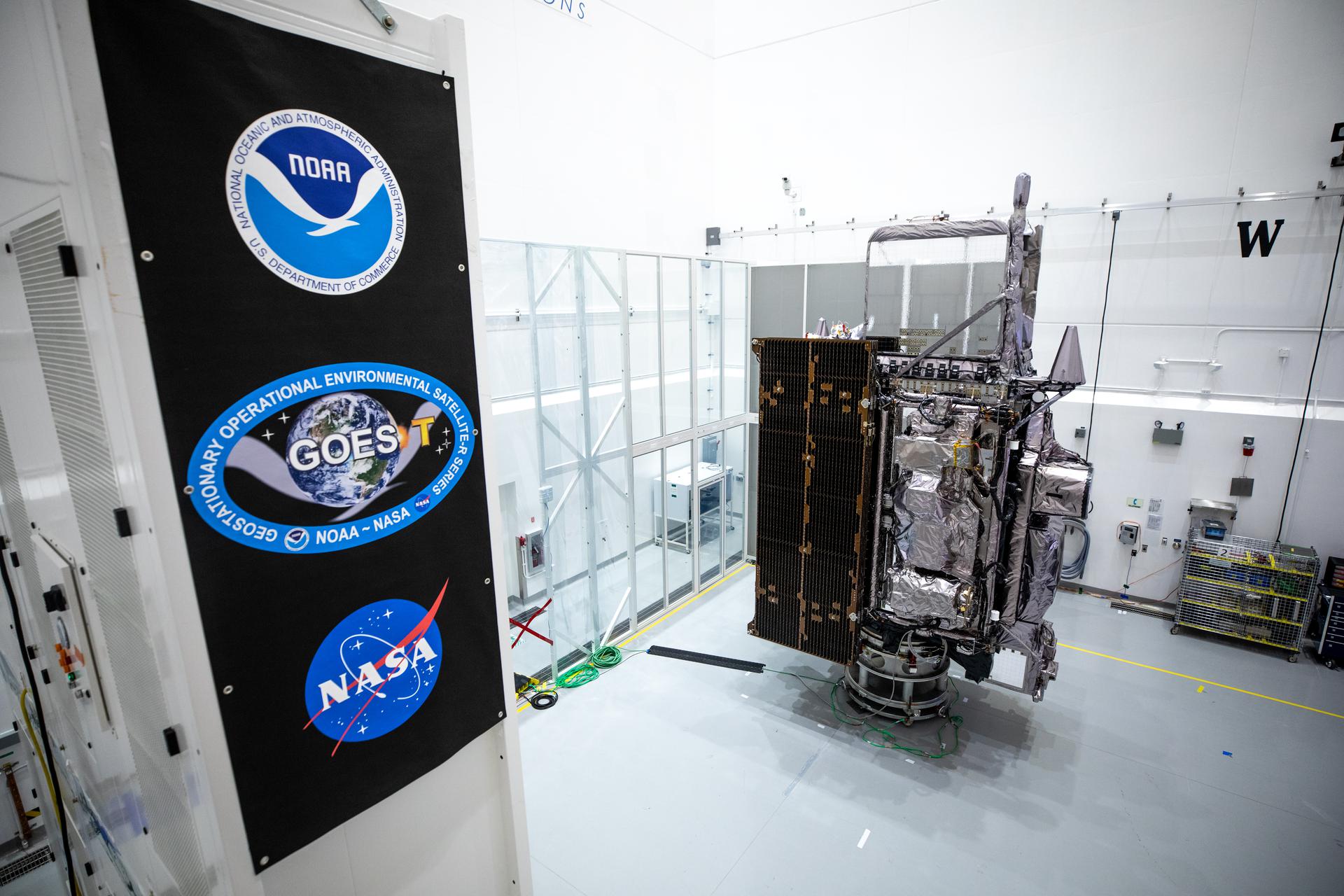
March 2022 – GOES-T
On March 1, 2022, the United States launched its latest weather satellite called GOES-T! GOES is short for Geostationary Operational Environmental Satellite. GOES-T is part of a group of four satellites – including GOES-R, GOES-S and GOES-U – that keep an eye on Earth’s weather from space. The GOES-R Series is a National Oceanic and Atmospheric Administration (NOAA) mission, supported by NASA.
NOAA’s latest generation of GOES is the nation’s most advanced fleet of geostationary weather satellites. Geostationary satellites circle Earth in geosynchronous orbit, which means they orbit Earth’s equatorial plane at a speed matching Earth’s rotation. This allows them to stay in a fixed position in the sky, remaining stationary with respect to a point on the ground. GOES satellites continually view the Western Hemisphere from approximately 22,300 miles above Earth. GOES satellites are designated with a letter prior to launch and renamed with a number once they reach geostationary orbit.
Did you watch the launch?
To learn more about the mission, visit the GOES-T launch page.
- Grow Snow Crystals See how temperature affects the shape of snowflakes.
- Weather Tricktionary How much do you know about the weather around you? Test your knowledge!
- Make Lightning with ZAP! You’re an updraft! In this game, build up charges within a storm cloud.
February 2022 – Venus, Earth’s “Sister” Planet
Venus is the brightest planet in the sky and the closest planet to Earth, on average. Sometimes referred to as Earth’s sister planet, Venus could serve as a model for many exoplanets soon to be discovered in the era of new space telescopes such as Webb. Venus may have been far more Earth-like than its present climate state, which is inhospitable and more like that inside a pressure-cooker oven with surface temperatures of 450 degrees Celsius and pressures equivalent to 1,000 meters below the sea.
Venus is an intriguing place of exploration to which we are working to send future spacecraft. Sending a mission to Venus would provide a new window on the evolution of planets in our solar system and beyond. It would also help answer such questions as “How did Venus evolve from a past habitable state to its present one?” and “How does that help us understand our own destiny?”
To support this endeavor, NASA has selected two new missions to explore Venus: Deep Atmosphere Venus Investigation of Noble-gases, Chemistry and Imaging (DAVINCI) and Venus Emissivity, Radio Science, InSAR, Topography, and Spectroscopy (VERITAS). These complementary missions are expected to launch in the 2027-2029 time frame and represent a new age of Venus exploration.
For more information on Venus, click here.
Try This at Home!
- Make a Volcano Explore how volcanoes can form on different planets in our solar system by creating your very own out of Play-Doh, baking soda and vinegar!
- Comparing Planetary Gases Learn about the differences among the atmospheres of Venus, Earth and Mars by using jelly beans or colored cotton balls to represent the gases in each planet’s atmosphere. *Note: This activity is written for a classroom setting but can be easily adapted to an at-home activity.
- NASA Venus Resources Explore this all-in-one resource package that combines activities you can do at home along with videos, animations, stories and articles.
November 2021 – The Sun Is A Star
The Sun is a star – like the stars you see in the sky at night. In heliophysics, scientists study our Sun and how it influences space. Space is not, as is often believed, completely empty. We actually live in the extended atmosphere of this active star, our Sun! The Sun sends out particles and energy – called the solar wind. The solar wind can affect other planets and even Earth. By studying the Sun and its atmosphere that we live in, NASA can protect our technology and astronauts in space, as well as learn about the possibility of life on planets elsewhere in the universe. NASA’s Parker Solar Probe mission is revolutionizing our understanding of the Sun, which can affect Earth and other worlds. Parker Solar Probe travels through the Sun’s atmosphere, closer to the surface than any spacecraft before it, facing brutal heat and radiation conditions to provide humanity with the closest-ever observations of a star.
Activities
Additional Resources
Find out more about NASA Science Missions.
Visit A Space Place for more fun activities.
October 2021 – Lucy Mission to the Trojan Asteroids
Launching in October 2021, Lucy will be the first space mission to explore the Trojan asteroids. These are a population of small bodies that are left over from the formation of the solar system. They lead or follow Jupiter in their orbit around the Sun and may tell us about the origins of organic materials on Earth.
Lucy will fly by eight different asteroids – a main belt asteroid and seven Trojans, four of which are members of “two-for-the-price-of-one” binary systems – and will study surface geology, surface color and composition, asteroid interiors and bulk properties, and will look at the satellites and rings of the Trojans.
Activities
- Lucy Coloring Sheet Color your very own Lucy spacecraft.
- Lucy Paper Snowflake Make your own Lucy paper snowflake!
- Lucy Paper Spacecraft Make your own Lucy paper spacecraft model with an approximate scale of 1:50. Note: Skill level is intermediate.
For more information on the Lucy mission, including videos, stories and other resources, click here.
September 2021 – Landsat
Landsat is a joint program between NASA and the U.S. Geological Survey, providing the longest continuous space-based record of Earth’s land in existence. Every day, Landsat satellites provide essential information to help land managers and policymakers make wise decisions about our resources and environment. Landsat 9 — the newest Landsat satellite set to launch in September — will continue the Landsat program’s critical role in monitoring, understanding and managing the land resources needed to sustain human life.
This virtual camp explores a new theme each week about how Landsat satellites help manage, protect and preserve some of your favorite places on Earth. You are welcome to camp with an Esri StoryMap that introduces the themes, including geology, agriculture, water, forests, urban planning, disaster monitoring, ice and climate, health and wellness, and biodiversity. In a partnership with Google Earth, virtual campers get to “TIMElapse Travel” back 36 years to places all over the world and see how our planet’s landscape has changed over time. Your virtual camp counselors have curated an exciting collection of videos, interactives, and downloadable games and activities you can do at home or with friends of all ages. Join in the fun at Camp Landsat!
Landsat at Home is a collection of virtual activities for parents and kids of all ages to enjoy. Download Landsat virtual meeting backgrounds and coloring pages, learn how to make an animated GIF of your favorite Landsat scene, and even test your skills by putting various Landsat scenes in order.
August 2021 – Juno Mission to Jupiter: 10 Years Since Launch
On Aug. 5, 2021, NASA’s Juno mission celebrated 10 years since it launched from Cape Canaveral Air Force Station in Florida. The spacecraft has made numerous scientific discoveries since arriving at Jupiter on July 4, 2016. A snapshot of these include the first definitive detection beyond Earth of an internal magnetic field that changes over time, Jupiter’s “shallow lightning” and “mushballs,” and the origins of Jovian polar light shows.
Earlier in 2021, NASA authorized a mission extension of Juno which will continue its investigation of Jupiter through September 2025, or until the spacecraft’s end of life. This expansion tasks Juno with becoming an explorer of the full Jovian system – Jupiter and its rings and moons – with multiple rendezvous planned for three of Jupiter’s most intriguing Galilean moons: Ganymede, Europa and Io.
Celebrate Juno’s 10-year launch anniversary by exploring the resources below!
Try This at Home!
- Bring Your Colossal Creativity to Giant Jupiter! Inspired by JunoCam images, each of these coloring sheets features different viewpoints of Jupiter the way the Juno spacecraft sees it. Unleash your creativity and download one of these coloring pages today!
- Jiggly Jupiter In this activity, you will build edible models of Jupiter and Earth to compare their sizes and illustrate their internal layers. Note: This activity is recommended for children ages 8 to 13.
- Jupiter’s Water Cycle Observe the water cycle in action! Water vapor in a tumbler condenses on chilled aluminum foil, producing the liquid form of water familiar to us as rain and dew. Learn how Jupiter’s lack of a surface simplifies its water cycle. Note: This activity is recommended for children ages 8 to 13.
- Make a Jupiter Orbiter Create your very own Juno spacecraft! You can even use your spacecraft to uncover secrets beneath Jupiter – just like the real Juno.
Additional Resources
- JunoCam Image Gallery Browse this site for incredible images taken by the Juno spacecraft and processed by enthusiasts around the world.
- NASA Jupiter Resources Explore this all-in-one resource package that combines activities you can do at home, videos and animations, and stories and articles.
- Psychedelic Juno Posters Celebrate the Juno mission to Jupiter with these dazzling downloadable posters.
July 2021 – GLOBE Observer and the Mosquito Habitat Photo Challenge
Over the last 25 years, the Global Learning and Observations to Benefit the Environment (GLOBE) program has collected data from citizen scientists all over the world that NASA then uses to validate its satellite data. The GLOBE program is preparing for an upcoming data collection challenge – Mosquito Habitat Photo Challenge – from July 25 to Aug. 25. This challenge combines the Mosquito Habitat Mapper and Land Cover (two GLOBE Observer app tools) to document mosquito breeding habitats with photos.
To prepare for that challenge, or just to learn a bit more about the world’s deadliest animal (the mosquito), here are some activities you might enjoy:
- Mosquito Tellers Learn facts about mosquitoes with these five foldable Mosquito Tellers (grayscale version) on the topics of prevention and protection, mosquito biology, West Nile virus, zika and dengue, and malaria. You can also use this blank template to make your own, perhaps using facts from the Beyond the Bite: Mosquito Disease Guide below!
- Beyond the Bite: Mosquito Disease Guide The Beyond the Bite: Mosquito Disease Guide provides background information on the biology, pathology and history of seven common mosquito-borne diseases: chikungunya, dengue, eastern equine encephalitis, malaria, West Nile virus, yellow fever and Zika virus.
- Mosquito Habitats and Hideouts Gain familiarity with the variety of container mosquito habitats, hideouts and life cycle stages with these games! Mosquito Habitats and Hideouts can be played three different ways: Bingo, Name That Habitat or Sketch That Habitat. Find all the details in the activity guide, print out the bingo boards, and use the hideouts call slides for your own game. You can also see a video demonstration of the activity explaining how the different versions work.
- Zika Zine: The Story of Three Aedes Mosquitoes and the Zika Within Them The fictional mosquitoes in the Zika Zine do the same sorts of things as real Aedes mosquitoes, which carry Zika virus. Read the zine and learn how Aedes mosquitoes live, and you’ll discover how to reduce the number of places where mosquitoes can survive. After you’ve read the Zika Zine, download the coloring pages How to Draw Wanda in 9 Easy Steps and Make Your Own Zika Zine Comic to create your own mosquito pictures and stories.
- Mosquito Proboscis: Mechanics of a Bite In Mosquito Proboscis: Mechanics of a Bite, you will learn how mosquitoes use their proboscis to bite through a diagram, video and poem. This is just one activity from the Mission Mosquito Science Notebook.
- Build a Mosquito Larvae Trap Build a do-it-yourself mosquito trap using simple materials. The trap tricks mosquitoes into laying their eggs in a container that the larvae can’t escape. You can then report the larvae using the Mosquito Habitat Mapper tool in the GLOBE Observer app. Set up a trap and monitor it over time to track when mosquitoes are appearing in your area. You can also watch this video demonstrating how to build a mosquito trap.
- Mosquito Larvae Hunters: Level 1 Training The Mosquito Larvae Hunters activity helps build the skills and knowledge required for finding and identifying mosquito larvae specimens.
- GLOBE Observer Mosquito Habitat Mapper Tool Ready to take observations with the GLOBE Observer app? We have videos to show you how to take a basic mosquito habitat observation and how to take samples of mosquito larvae. For even more information, visit the Taking Mosquito Habitat Observations page.
You can find even more activities on the Mosquito Habitat Mapper Challenge webpage, and in our Mosquito Habitats Resource Library.
Watch Videos About Mosquitoes and NASA
- Mosquito Meets MODIS: South Dakota is the U.S. hotspot for West Nile disease. Scientists and public health officials there have developed a way to use environmental data from NASA satellites to forecast the risk of West Nile. They’re giving people working on preventing the disease an important new tool for protecting the population.
- Predicting Malaria Outbreaks with NASA Satellites: University researchers have turned to data from NASA’s fleet of Earth-observing satellites, which are able to track the types of human and environmental events that typically precede an outbreak. With funding from NASA’s Applied Sciences Program, they are working in partnership with the Peruvian government to develop a system that uses satellite and other data to help forecast outbreaks at the household level months in advance and prevent outbreaks.
- Why I Study Mosquitoes with Dr. Rusty Low: Dr. Rusty Low, a member of the GLOBE Observer science team, talks about why she started studying mosquitoes, and why it’s important to collect data about mosquitoes and mosquito habitats, including by using the Mosquito Habitat Mapper tool.
June 2021 – Laser Communications Relay Demonstration (LCRD)
LCRD will use lasers to communicate information to and from space! Located 22,000 miles away from Earth aboard a U.S. Department of Defense satellite, LCRD will display the benefits of laser communications. Unlike most NASA missions which use radio waves, laser communications uses infrared light to send information collected in space to scientists on Earth.
LCRD will spend two years conducting experiments to test laser communications capabilities, which will help NASA learn and innovate future solutions. After this initial phase, LCRD will start to support missions in space, like a terminal aboard the International Space Station!
Try these fun activities to learn more about LCRD and laser communications!
- Feel the Noise
- This activity helps students learn about communicating with waves, and how it’s different on Earth and in space! In space, LCRD will use light waves to transmit data, because in space, there is no air or matter for the waves to move through. But on Earth, we use sound waves to communicate with each other, which can move through matter, liquid or gas.
- Additional LCRD STEM Activities for All Grades
- LCRD Coloring Pages
- Grab your crayons, colored pencils or paint brushes! Show off your creativity with one of the LCRD coloring pages.
- LCRD Videos
- Learn more about the background of LCRD and how it’s made with this Faces of Technology video.
- LCRD Articles
- Read about LCRD’s background, capabilities and ground stations, as well as other laser communications missions.
- LCRD Resources
- Virtual Background: Represent LCRD with a virtual computer background! Use during calls with friends or family, and share your NASA knowledge.
- Bookmark: Just as you read words off a page and transfer them to your brain, LCRD takes data and transmits them from space to Earth! Download a bookmark to keep your place in your books and remind you of the learning and data transmission process.
May 2021 – Joint Polar Satellite System (JPSS)
Learn about JPSS, a pair of Earth-orbiting satellites that give scientists data to predict the weather and climate!
JPSS measures water, clouds, temperature and air pressure – which all affect our daily weather. Using JPSS data, scientists can predict and provide warnings for hurricanes, tornadoes and blizzards. JPSS also measures droughts, forest fires, air and water quality, and the health of our ozone layer. JPSS and Geostationary Operational Environmental Satellites keep a watchful eye on Earth, collecting important data that help us every day with things like weather forecasting, agriculture and even public health. There are many ways you can find JPSS in Your Community! These satellites also show us stunning views of our home planet. Check out just a few of them in this new Earth Day video.
Activities
Take a Journey Through the Water Cycle
Did you know there are approximately 326 million trillion gallons of water on Earth! That’s a lot of water, and much of it is constantly moving! Journey along with a water droplet through storms, snow, lakes, oceans and even glaciers in our new Water Cycle Board Game! All materials to play the game are provided at the link above. All you need from home is a die!
Measure Precipitation With JPSS
We all know that April showers bring May flowers! Are you still getting a lot of rain in your area this month? You can measure rainfall with JPSS using this Rain Gauge STEM activity.
In addition, some parts of the United States may still experience snow in May! If that’s the case near you, you can still measure precipitation with JPSS! Try this Snow Stick activity instead.
Craft Water Vapor and Other Greenhouse Gas Molecules
Did you know the Advanced Technology Microwave Sounder instrument aboard JPSS satellites sees through clouds and measures water vapor, an important greenhouse gas, in the atmosphere? Other instruments, such as the Visible Infrared Imaging Radiometer Suite and Ozone Mapping Profiler Suite, can measure other gases and even particles called aerosols! They see things like ozone, volcanic ash and even dust. However, what’s an aerosol, and why is measuring these things important? Check it out here, and put on your lab coat. It’s time for you to be the scientist!
Additional Resources:
Meet JPSS Comic
JPSS Coloring Page
Poster
Videos:
NOAA-20 satellite orbit with Suomi NPP and JPSS-2: See how a polar orbit works.
JPSS Proving Grounds: Watch and learn about the human impact of weather data.
5 Things That Changed Weather Forecasting Forever
Our Eyes in the Sky: Watch how satellites have improved hurricane forecasting.
Image Galleries:
NASA Visible Earth – Suomi NPP
JPSS Image Galleries
April 2021 – James Webb Space Telescope
The James Webb Space Telescope (sometimes called JWST or Webb) will be a large infrared telescope with a 6.5-meter primary mirror. The telescope will be launched aboard an Ariane 5 rocket from French Guiana in 2021.
Webb will be the premier space observatory of the next decade, serving thousands of astronomers worldwide. It will study every phase in the history of our universe, ranging from the first luminous glows after the big bang, to the formation of solar systems capable of supporting life on planets like Earth, to the evolution of our own solar system. Try these fun activities to learn more!
Designed for grades K-4, this fun pad contains page after page of activities and information.
Grab your crayons, colored pencils or paintbrushes and download one of our many coloring templates to start your masterpiece of the Webb telescope!
- Webb Origami
- origami pattern of the Webb primary mirror highlights the elegant engineering and artistic inspiration behind the telescope.
Make your very own Webb telescope! Click here to see how to make it.
This 48-frame flip-book highlights how Webb deploys or unfolds once in space. It can be made at home using paper and a binder clip. As you quickly flip through the frames, you can see an animation of how Webb will deploy in space!
An educational game for high school and college students, in which they get to be the scientist by building their own satellite.
March 2021 – Artemis
With the Artemis program, NASA will land the first woman and next man on the Moon by 2024, using innovative technologies to explore more of the lunar surface than ever before. We will collaborate with our commercial and international partners and establish sustainable exploration by the end of the decade. Then, we will use what we learn on and around the Moon to take the next giant leap – sending astronauts to Mars.
Do you want to put the “Art” in Artemis? Learn step by step how to draw components of the Artemis program. Draw, then share your space-crafty drawings with #drawARTEMIS.
Forward to the Moon with Artemis Explorer Activities
Play word and number puzzles while you learn about the Apollo mission that first put people on the Moon. Learn about the Artemis mission that will land the first woman and next man on the Moon. The free, printable booklet has mazes, word searches, sudoku puzzles with pictures and other types of puzzles. Click here for the answer key.
It can be a little cramped staying inside the International Space Station all that time. Astronauts still need to do their everyday living. Imagine you and your family are astronauts on the space station right now. How would you adapt to the challenges and still keep doing important routines, like exercising, learning and making time for fun?
Build Your Own Space Launch System
The Space Launch System (SLS) is NASA’s newest rocket. It is part of the Artemis program, which will take the next astronauts to the Moon. You can build a SLS model with school supplies. Download the instructions and build your SLS model.
Engineering is Out of This World!
SLS will be able to carry astronauts and materials known as payloads. These simple activity sheets explain how acoustical, aerospace, electrical, materials and mechanical engineers are helping to build the SLS.
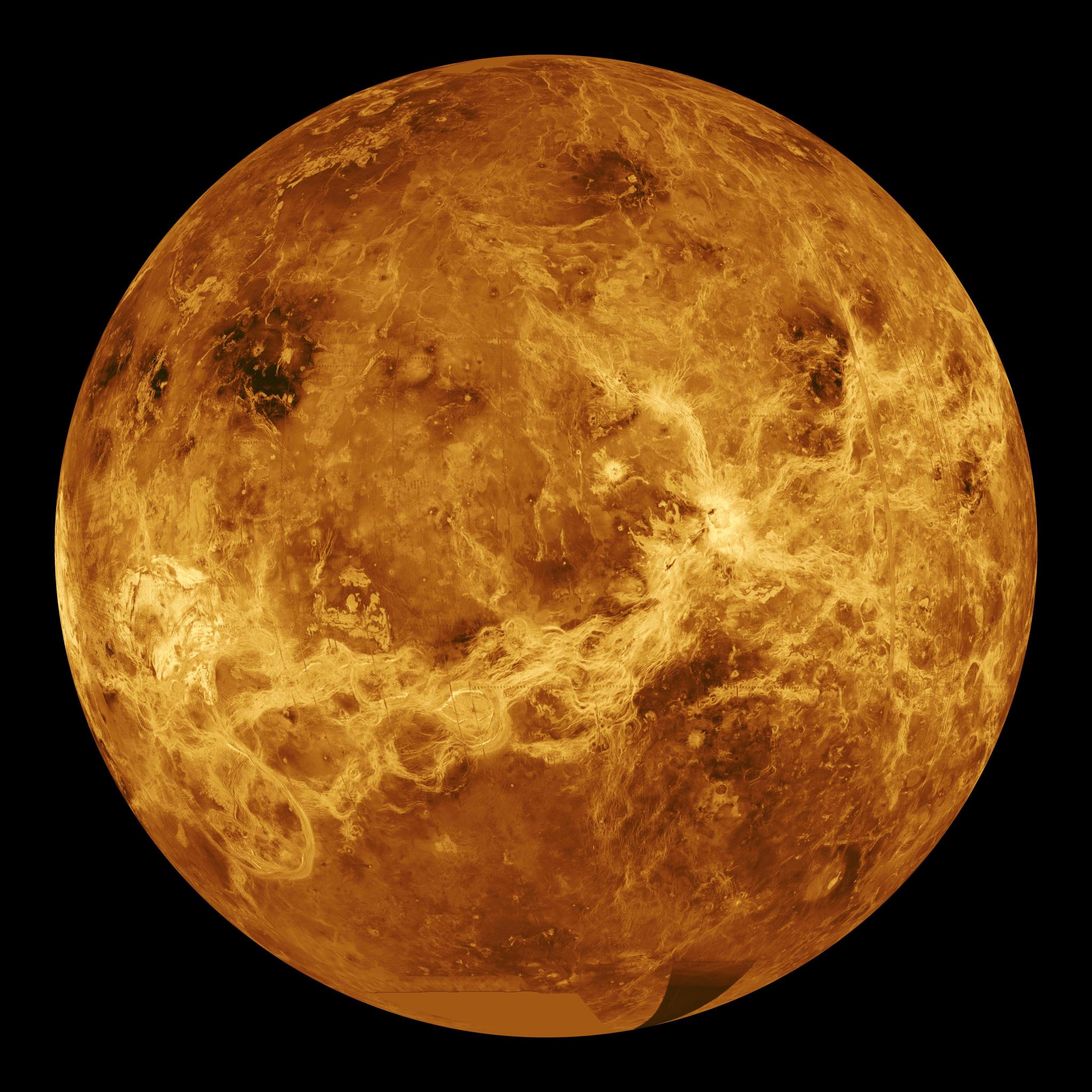
February 2021 – Venus: Earth’s ‘Sister’ Planet
Venus is the brightest planet in the sky and the closest planet to Earth, on average. Sometimes referred to as Earth’s “sister” planet, Venus could serve as a model for many exoplanets soon to be discovered in the upcoming era of new space observatories such as the James Webb Space Telescope. Venus may have been far more Earth-like than its present climate would suggest. The climate is inhospitable and more like that inside a pressure oven with surface temperatures of 450 degrees Celsius and pressures equivalent to 1,000 meters below sea level.
Venus is an intriguing place of exploration to which we are working to send future spacecraft. Sending a mission to Venus would provide a new window on the evolution of planets in our solar system and beyond. It would also help answer such questions as “How did Venus evolve from a past habitable state to its present one?” and “How does that help us understand our own destiny?”
To celebrate Venus, the Roman goddess of love, we have created special planetary-themed valentines that you can share with friends and family near and far.
Try This at Home!
Explore how volcanoes can form on different planets in our solar system by creating your very own out of Play-Doh, baking soda and vinegar!
Planet Phases: Why Does Venus Look Like the Moon?
Did you know that Mercury and Venus have phases just like Earth’s Moon? This activity helps to explain why!
Additional Resources
Explore this all-in-one resource package that combines activities you can do at home along with videos, animations, stories and articles.
Share these NASA planetary valentines with friends and family!
In February 2020, NASA selected two missions to Venus for consideration under the agency’s Discovery Program. Among the finalists, NASA will select one or two missions for flight by summer 2021. For more information on the two proposed Venus missions, see DAVINCI+ here and VERITAS here.
For more information on Venus, click here.
January 2021 – Parker Solar Probe
Parker Solar Probe will swoop to within 4 million miles of the Sun’s surface, facing heat and radiation like no spacecraft before it. Launched on Aug. 12, 2018, Parker Solar Probe will provide new data on solar activity and make critical contributions to our ability to forecast major space weather events that impact life on Earth.
In order to unlock the mysteries of the corona, but also to protect a society that is increasingly dependent on technology from the threats of space weather, we will send Parker Solar Probe to touch the Sun.
Exploring Ultraviolet (UV) Light From the Sun
This activity explores UV rays from the Sun and ways we can protect ourselves from these potentially harmful rays.
Make this marbled paper that looks just like our Sun.
In this activity, see for yourself how sunscreen can be used to block the Sun’s UV rays.
Use candy pieces and a cookie to make an accurate model of the Sun that you can eat!
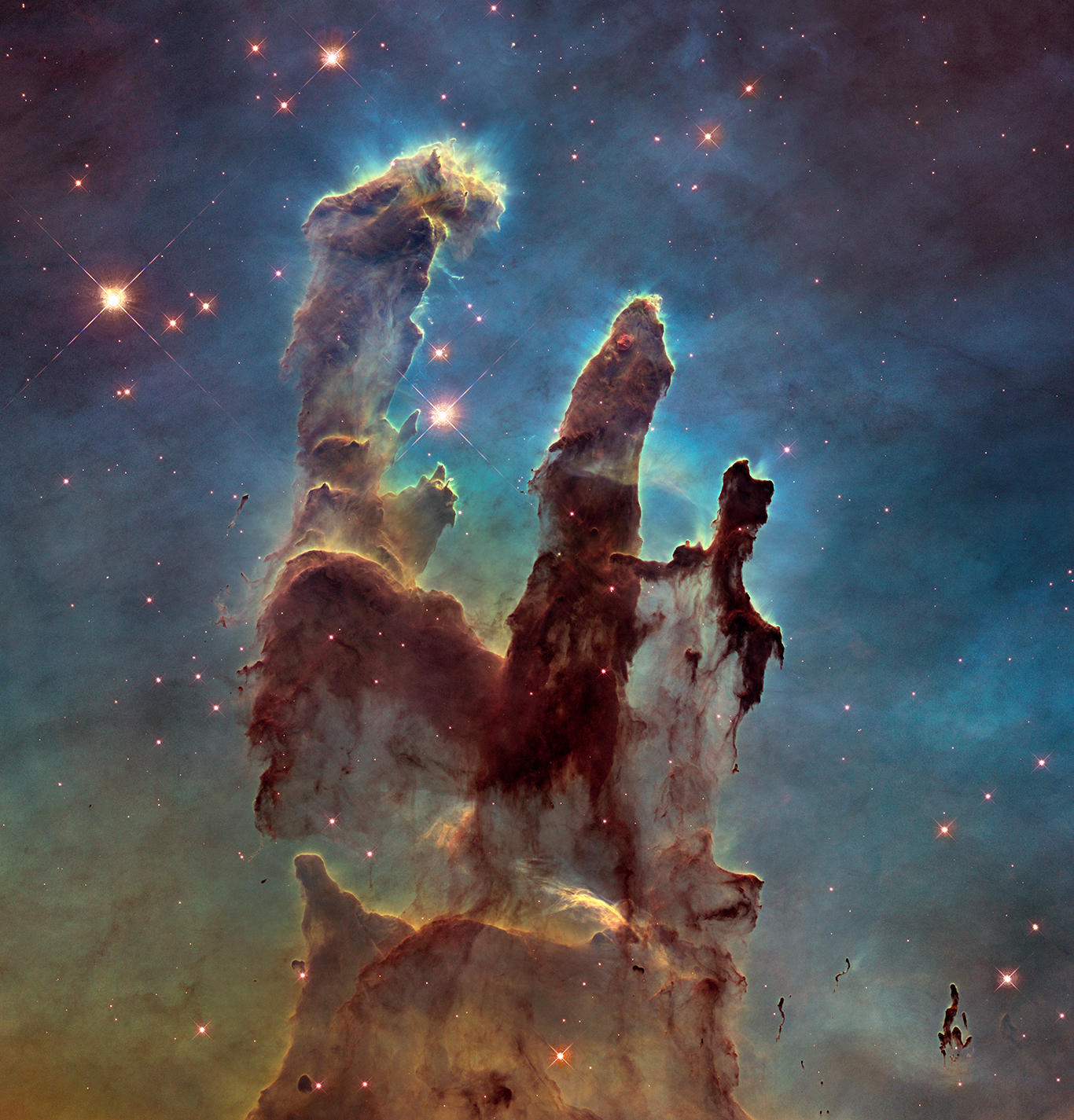
December 2020 – Hubble Space Telescope
The Hubble Space Telescope is the first major optical telescope to be launched into space, the ultimate mountaintop. Above the distortion of Earth’s atmosphere, far above rain clouds and light pollution, Hubble has an unobstructed view of the universe. Scientists have used Hubble to observe the most distant stars and galaxies as well as the planets in our solar system. Observing the cosmos from near to far, as well as its earliest moments and more current phenomena such as sandstorms on the surface of Mars, Hubble’s launch in 1990 marks the most significant advancement in astronomy since Galileo’s telescope. Our view of the universe and our place within it has never been the same ever since.
Test your knowledge of Hubble science and technology. Hear answers from scientists and engineers behind the telescope.
Watch cosmic objects transform when seen in different wavelengths of light.
What Did Hubble See on Your Birthday?
Hubble explores the universe 24 hours a day, seven days a week. That means it has observed some fascinating cosmic wonder every day of the year, including on your birthday.
Visit Hubble in orbit and investigate how it works with this 360-degree virtual tour.
For more online Hubble activities, click here. For more information on the mission, click here.
November 2020 – Joint Polar Satellite System (JPSS)
Meet JPSS, a pair of Earth-orbiting satellites that give scientists data to predict the weather and climate!
JPSS measures water, clouds, wind, temperature and air pressure – which all affect our daily weather. Using JPSS data, scientists can predict and provide warnings for hurricanes, tornadoes and blizzards. JPSS also measures droughts, forest fires, air and water quality, and the health of our ozone layer. There are many ways you can find JPSS in Your Community!
JPSS detects invisible forms of light to monitor Earth. Invisible forms of light include radio, microwave, infrared, visible and ultraviolet light waves. JPSS detects different wavelengths of the electromagnetic spectrum to measure the temperature of Earth’s surface, oceans and atmosphere. Try these activities to experience how light waves move and carry energy:
- Activity One: Simulate Light Wave Energy
- Activity Two: Block Infrared Light From a TV Remote
Did you know that natural greenhouse gases like water vapor and small particles like volcanic ash in Earth’s atmosphere affect the weather? JPSS monitors the gases in Earth’s atmosphere to help scientists predict the weather, monitor wildfires, detect volcanic activity and more!
- Build it! Gather materials from around the house, like Lego bricks or Play-Doh, to build models of the natural greenhouse gas molecules that JPSS detects.
- Scroll through this interactive site to explore Earth’s atmosphere.
Water influences the weather. One of the primary missions of JPSS is to monitor the water cycle, or the movement of water through Earth’s surface, oceans and atmosphere. Learn more about Earth’s water cycle!
- Make a Cloud in a Bottle: With an adult, use an empty bottle, rubbing alcohol and an air pump to make a cloud.
- Make a Rain Gauge: How much rain do you get? Make a rain gauge and check it daily to find out.
Additional Resources
Videos
NOAA-20 satellite orbit with Suomi NPP and JPSS-2: See how a polar orbit works.
JPSS Proving Grounds: Watch and learn about the human impact of weather data.
5 Things that Changed Weather Forecasting Forever
Our Eyes in the Sky: Watch how satellites have improved hurricane forecasting.
Image Galleries
NASA Visible Earth – Suomi NPP
October 2020 – Sampling an Asteroid with OSIRIS-REx
On Oct. 20, in NASA’s first-ever asteroid sample collection attempt, the Origins, Spectral Interpretation, Resource Identification, Security-Regolith Explorer (OSIRIS-REx) spacecraft will attempt to collect a sample from near-Earth asteroid Bennu. Celebrate with us on social media with #ToBennuAndBack!
In a process called Touch-And-Go (TAG), the spacecraft’s sampling mechanism will touch Bennu’s surface for several seconds, fire a charge of pressurized nitrogen to disturb the surface and collect a sample before the spacecraft backs away. In response to rocky conditions discovered on the asteroid’s surface when OSIRIS-REx began orbiting Bennu in December 2018, the mission team has reduced the sample area to one-tenth of the original plan. This means the spacecraft must target Bennu’s surface with even greater accuracy. A building-size boulder is also situated on the eastern rim of the sample site – called Nightingale crater – which could pose a hazard to the spacecraft as it backs away from the asteroid after collecting the sample. The OSIRIS-REx team performed two rehearsal operations to prepare for these challenges and is ready. The spacecraft is scheduled to begin the journey back to Earth next year, arriving with the sample in September 2023.
Studying Bennu helps researchers learn more about the origins of our solar system, sources of water and organic molecules on Earth, and hazards and resources in near-Earth space.
Try This at Home!
Design, build and test a device that can take a core sample from a potato “asteroid,” “moon” or “planet.” This activity uses a potato as the asteroid, but any object with a similar makeup and consistency can be used. You can also use different types of chocolate candies to drill into.
Note: This activity is about drilling into an asteroid to collect a sample, unlike the OSIRIS-REx mission which will “TAG” the surface to collect its sample.
Create your own unique asteroid using a few simple materials.
#MyOSIRISREx Pocket Spacecraft
While the real OSIRIS-REx spacecraft is working on collecting a sample from asteroid Bennu, take your own pocket spacecraft for an adventure right here on Earth. Snap a photo of your spacecraft TAG-ing something interesting where you live!
OSIRIS-REx Paper Spacecraft Model
Make your very own paper model of the OSIRIS-REx spacecraft!
Additional Resources
Explore this all-in-one resource package that combines activities you can do at home, videos and animations, and stories and articles.
OSIRIS-REx Sample Collection Poster
Celebrate the OSIRIS-REx spacecraft’s attempt to collect a sample from near-Earth asteroid Bennu with this commemorative poster.
Explore this gallery of images of asteroid Bennu taken by the OSIRIS-REx spacecraft.
Participate
- Get in on the excitement between now and TAG by following the OSIRIS-REx mission on Twitter, Facebook, Instagram and these websites: www.nasa.gov/osiris-rex and www.asteroidmission.org.
- Share how you are celebrating #ToBennuAndBack on your preferred social media platform!
- Tune in to NASA TV on Oct. 20 at 5 p.m. EDT for a live broadcast of the event.
September 2020 – Space Communications and Navigation
Feel the Noise
Use everyday metal objects and string to feel sound waves moving through different substances or mediums. This activity demonstrates vibrations interacting with matter, building fundamentals for learning more about waves, energy and communications.
Search-and-Rescue Coloring Book
Learn about NASA’s work in developing search-and-rescue technologies through poetry and art. This printable coloring activity book is a perfect way to introduce young learners to the concepts of satellite-based navigation.
It’s Magnetic
Explore space navigation through orienteering, and learn how our planet’s magnetic field provides a reference to help us navigate on Earth.
![]() Parent Activity Manual – It’s Magnetic
Parent Activity Manual – It’s Magnetic
![]() Parent Activity Manual – Feel the Noise
Parent Activity Manual – Feel the Noise
August 2020 – How NASA Studies Earth
Brought to you by ICESat-2, Global Precipitation Measurement, NASA’s Earth Observatory, and Landsat.
- ICESat-2 and Open Altimetry
NASA’s ICESat-2 uses lasers to measure heights on Earth, including tree heights. Join Wallops Flight Facility’s Brian Campbell, ICESat-2 education lead (and NASA GLOBE Observer trees science lead), as he demonstrates all things about the satellite (video on Facebook). Plus, learn how to look at the data coming from ICESat-2 on the Open Altimetry online tool. - From Satellites to Your Backyard – Graphing IMERG Monthly Precipitation Data
Did you know NASA has satellites that observe rain and snow all over the world? With this activity, you can access NASA data to see how much precipitation was observed by satellites for your location any time from June 2000 to the present. - Archaeology: Digging Into the Past
This beautiful poster highlights stunning Landsat imagery for six different sources of Earth materials: evaporation ponds, mines and quarries, water, rangelands, croplands, and forests. It also features a game in which players travel around the board collecting raw Earth materials in order to manufacture products – all while interacting with Landsat imagery and trying to avoid natural disasters. A downloadable version of the poster is now available here in both English and Spanish. NOTE: We are planning to have a more printer-friendly black-and-white version available next month.Archaeologists uncover the past by digging through layers of civilization, but what if you could peel back all those layers without ever placing a pick or shovel in the dirt? This is where “space archaeology” comes in. Space archaeology is exactly like it sounds – studying the past from space.Autumn Burdick, Earth Observatory kids writer, shows you how you can make your own Ancient Civilization Sandbox. - The Shape of Farming Water for Crops
When you are flying in an airplane, you might spot neat squares, long curving lines and green circles on the ground. What are they? Usually they are farms, which may look different based on different farming practices. The shapes have a lot to do with water: finding a steady supply, conserving it and minimizing losses.Make your own garden and watch it daily as it changes, using your cellphone camera like a satellite to monitor change with the How Does Your Garden Grow? activity. - Air Pollution: Seeing Small Specks From Space
Satellites can measure air pollution over large areas, not just where ground sensors are located. Observing from space can help us track pollution as winds blow it far from its original source – from the cities to the countryside, and even from one continent to another.Join Autumn Burdick, Earth Observatory kids writer, as she tests the air quality around her home and demonstrates the How Clean is Your Air? activity. - New Landsat Earth Science Week Poster and Game: Earth Materials Seen From Space
This beautiful poster highlights stunning Landsat imagery for six different sources of Earth materials: evaporation ponds, mines and quarries, water, rangelands, croplands, and forests. It also features a game in which players travel around the board collecting raw Earth materials in order to manufacture products – all while interacting with Landsat imagery and trying to avoid natural disasters. A downloadable version of the poster is now available here in both English and Spanish. NOTE: We are planning to have a more printer-friendly black-and-white version available next month.
August 2020 – Ocean Worlds Week
In the past few decades, our understanding of our solar system and planets outside our solar system has expanded drastically. We now know that there are moons in our solar system and planets outside our solar system that contain large amounts of liquid water. We call these ‘ocean worlds.’ Ocean worlds contain at least 10 times the amount of water relative to land as our own planet and are intriguing candidates in our search for life outside of Earth.
NASA’s research on oceans also includes our own planet and helps us to better understand the role of Earth’s ocean in our planet’s climate system. As we learn more about our own oceans, we will better understand worlds beyond Earth.
Activities & Resources
Ocean Worlds: The Search for Life
Life as we know it requires three ingredients: energy, organic molecules, and liquid water. Astrobiology, our search for life beyond Earth, is a search for planets, dwarf planets, and moons that harbor substantial liquid water. We call these places “ocean worlds.”
NASA Ocean Worlds Resources
Explore this all-in-one resource package that combines activities you can do at home, videos/animations, and stories/articles.
Ocean Networks Canada Activities
There is so much to learn about the ocean on Earth, too! Have fun with these hands-on activities designed for K-12 students. The University of Victoria’s Ocean Networks Canada monitors the west and east coasts of Canada and the Arctic to continuously deliver data in real-time for scientific research that helps communities, governments and industry make informed decisions about our future.
Properties of Water Activity with the University of Hawaii
Water has an amazing ability to adhere (stick) to itself and to other substances. We see evidence of water’s cohesiveness every day – in water droplets and in streams of water. Our experience with water, however, usually involves water touching something else. Water is very adhesive; it sticks well to a variety of different substances. Water sticks to plants, to dishes, and to your eyebrows when you sweat. Adhesion also explains why soil is able to hold water (and form mud). Learn more and find the full activity at Exploring Our Fluid Earth.
Are Planets with Oceans Common in the Galaxy? It’s Likely, NASA Scientists Find
Several years ago, planetary scientist Lynnae Quick began to wonder whether any of the more than 4,000 known exoplanets, or planets beyond our solar system, might resemble some of the watery moons around Jupiter and Saturn.
Water Vapor Plumes on Europa
What makes Jupiter’s moon Europa so alluring is the possibility that it may possess all the ingredients necessary for life. Scientists have evidence that one of these ingredients, liquid water, is present under the icy surface and may sometimes erupt into space in huge geysers.
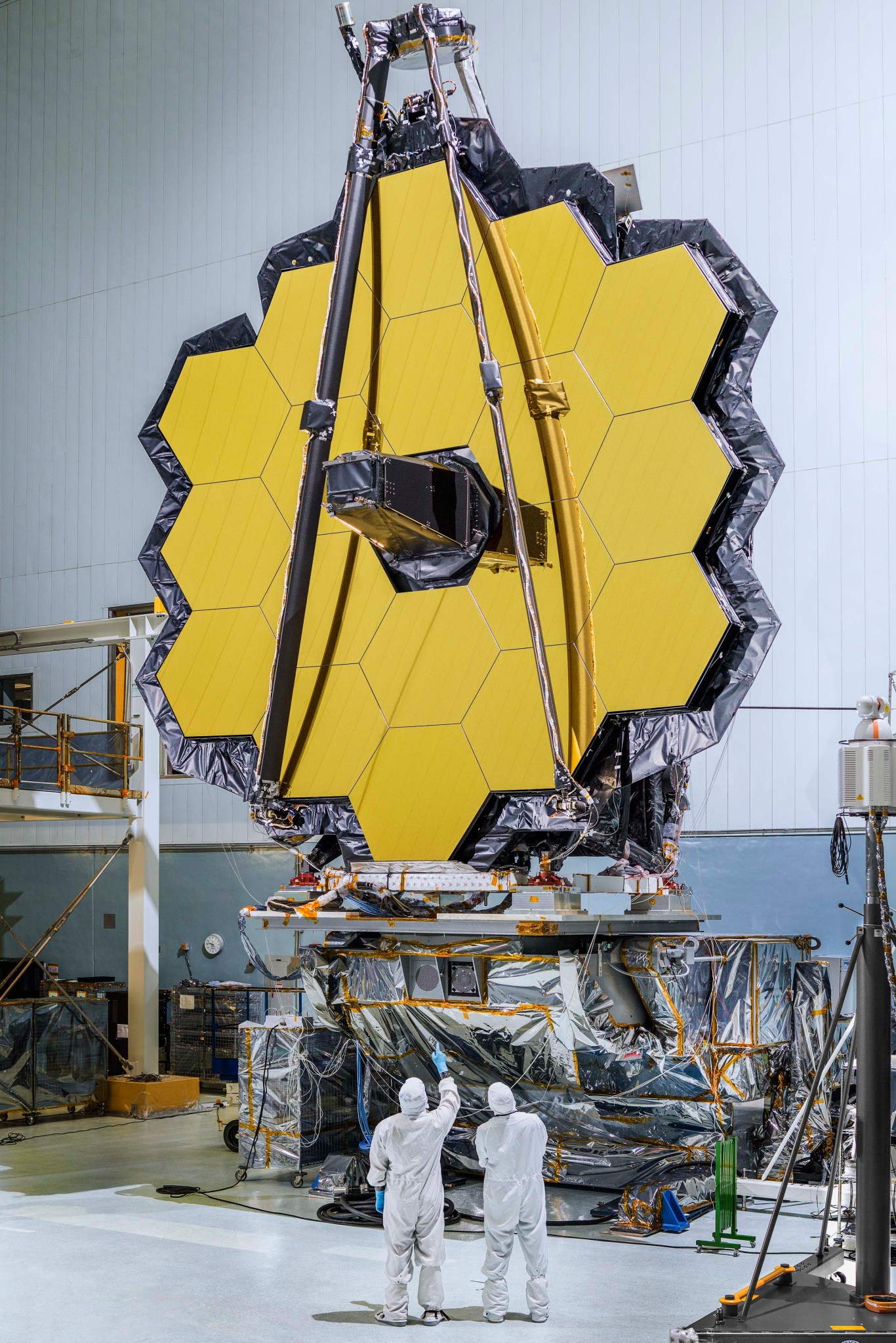
July 2020 – James Webb Space Telescope
- Folding and Unfolding Webb
For the James Webb Space Telescope to fit into a rocket, it must fold up. Whether it is the primary mirror or the sunshield, many parts of Webb are designed to deploy or unfold once in space. This origami pattern of the Webb primary mirror highlights the elegant engineering and artistic inspiration behind the telescope.
- Webb Deployment Flip-book
For the James Webb Space Telescope to fit into a rocket, it must be folded up. After launch, Webb will deploy during its roughly 30-day, million-mile journey out to the second Lagrange point (L2). This 48-frame flip-book highlights how Webb deploys or unfolds once in space. It can be made at home using paper and a binder clip. As you quickly flip through the frames, you can see an animation of how Webb will deploy in space!
- Build Your Own Webb Model
Make your very own Webb telescope! Click here to see how to make it.
- Webb Telescope Fun Pad
Designed for grades K-4, this fun pad contains page after page of activities and information.
- James Webb Space Telescope Coloring Page
To learn more about the James Webb Space Telescope, click here.




























